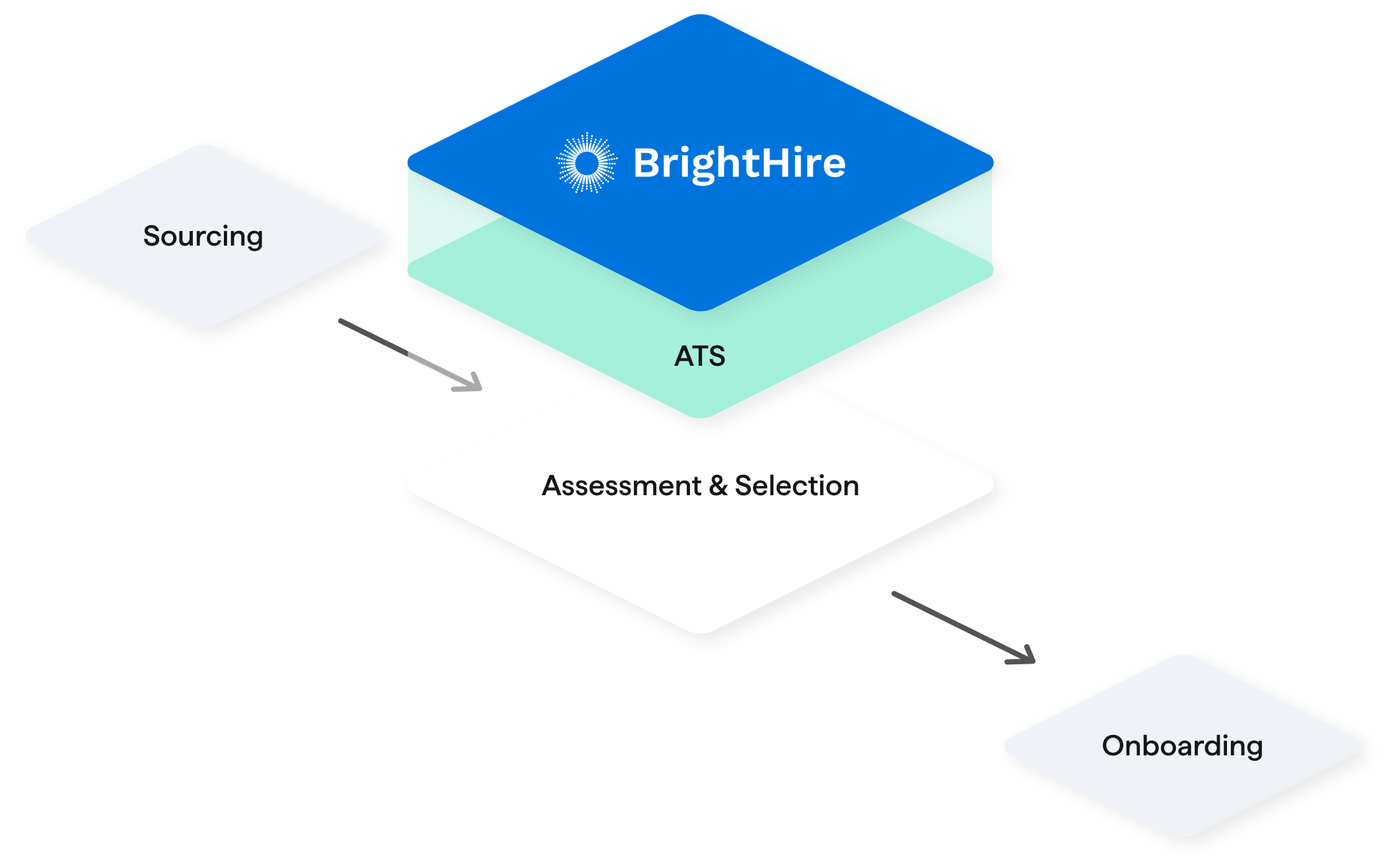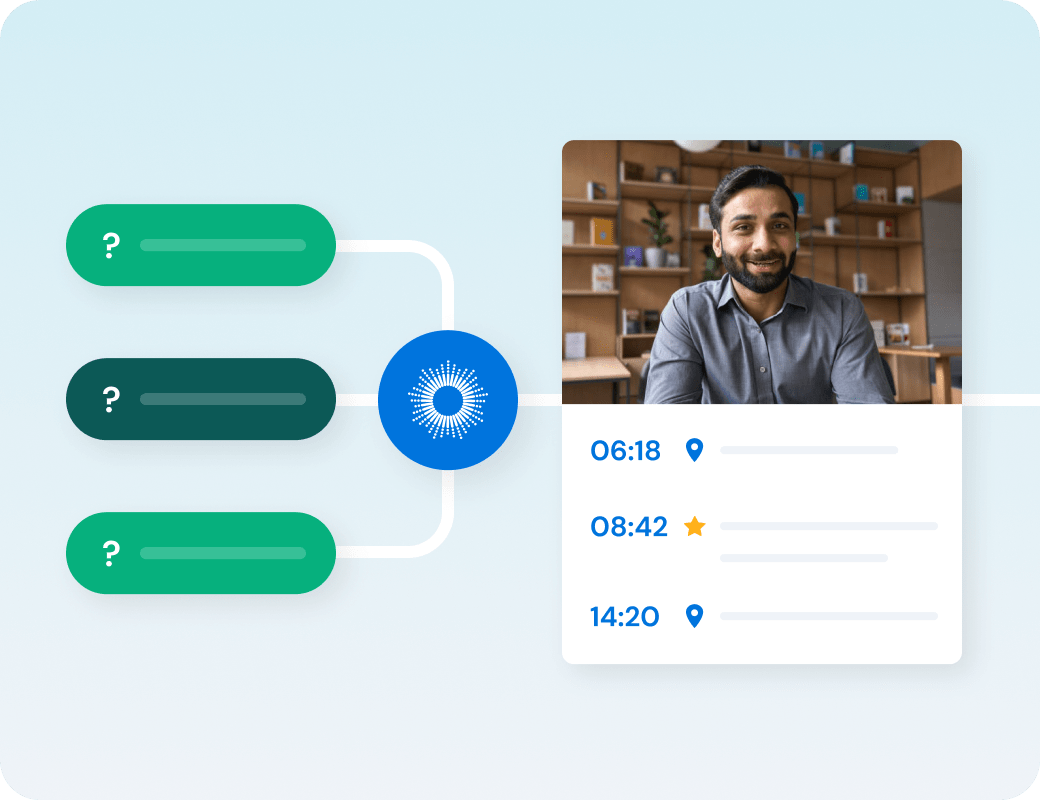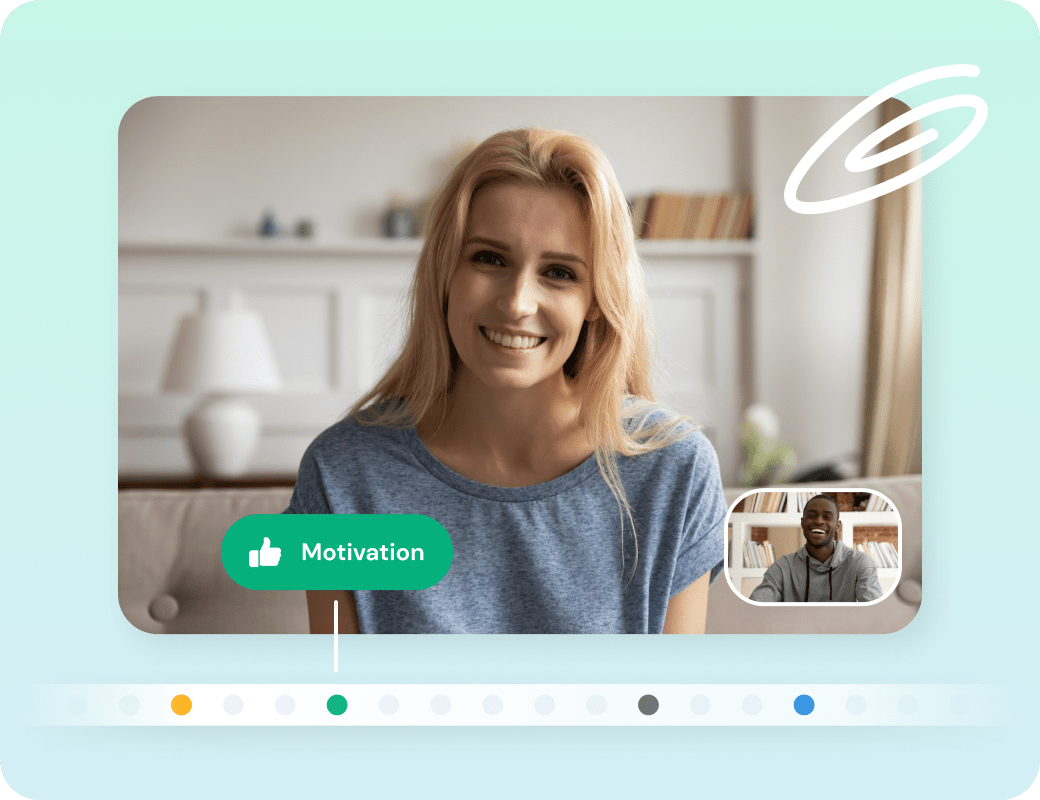Interview intelligence is a complete transformation of the hiring process. By automatically recording and transcribing interviews, and creating a set of highlights that can be revisited and shared, interview intelligence unlocks valuable data from every interview conversation and brings that information to the center of important hiring decisions. The resulting experience is faster, more insightful, and less biased.
This data-driven step change in hiring is especially impactful for companies who are scaling quickly and looking to embrace modern hiring practices. Hiring teams can use Interview Intelligence to better determine what “great” sounds like, retain important context from candidate conversations, share interviews across teams, and better understand which interview inputs lead to better hiring outcomes.
Interview Intelligence also creates an unparalleled experience for candidates, who appreciate less distracted interviewers, increased objectivity, and faster interview cycles.
Interview Intelligence doesn’t offload important hiring decisions to AI, but it uses AI technology to uplevel the interview experience and help hiring teams be more collaborative and objective.

Interview Intelligence is the Excellence Layer for Hiring
BrightHire Interview Intelligence sits on top of the tools you already use to seamlessly drive excellence in the heart of the hiring process, interviews.
Hiring is one of the biggest investments a company makes. But for years, hiring decisions have been made based on rough notes, fuzzy memories, and subjectivity.
The truth is the way we hire is broken. To win the best talent, you must bring your hiring process up to today’s standards. That’s where interview intelligence comes in.
Interview intelligence is the new way of hiring. It unlocks valuable interview data and insights that allows teams to make quality hiring decisions based on real evidence. Interview intelligence fundamentally transforms how you hire, making it faster, fairer, and higher-quality.
The old way of hiring WITHOUT INTERVIEW INTELLIGENCE
Interview Intelligence modernizes hiring for everyone involved in the process:
Interviewers are able to more easily connect with candidates, and focus less on note taking or repeating questions from a previous interview.
Hiring teams can use a candidate’s actual words to make a decision, which decreases the likelihood that bias sneaks into the process. Every conversation can be reviewed, compared, and shared across the hiring team to accelerate alignment and increase confidence in hiring decisions.
Candidates have the reassurance that hiring decisions will be made based on their own words, not an interviewer’s selective memory. They also appreciate not having to re-answer the same questions in every interview.
Talent teams can return to the interviews of previous candidates and use them to jumpstart the hiring process for future roles. Interview recordings also help accelerate new recruiter ramp, and give interviewers a better understanding of what “great” looks like from both sides of the interview.
Interview intelligence provides new insights and stops your relying on fuzzy memories and choppy notes, so you can make better, faster, more equitable hiring decisions.
Quality interviews, quality hires
Give interviewers the tools they need to create the ideal candidate experience, and make decisions based on shared context.
Recruiter & interviewer training
Onboard and upskill recruiters and interviewers with automated guidance and interactive coaching.
Faster, more efficient hiring
Fill roles faster with a more collaborative, streamlined process that optimizes your recruiting funnel to capture great talent.
Transparency for equitable hiring
Demonstrate your commitment to reducing bias with equitable hiring practices and new visibility into interviews.

Automatically create structured interview plans
Ensure structure in every interview by porting questions directly from your ATS. Cover more surface area with every candidate, and deliver a thoughtful, coordinated process.
Better interview prep
Don’t wing it. Interviewers can watch key highlights in double time to prep for conversations and make the most out of their limited time with candidates.

Live guidance and feedback
Give every interviewer the roadmap to a perfect interview with in-the-moment guidance, and the tools to facilitate a structured, consistent conversation.
Interviewers at their best
Free up interviewers so they can focus on candidates, not on taking notes. Give them the confidence to truly listen to candidates and deliver a great experience.
Confident, collaborative decisions
Give your hiring teams the gift of perfect information transfer with interview highlights
and native collaboration.
Better, faster feedback
Instantly refer back to key moments and automatically transfer them to your ATS. Asynchronously review conversations to accelerate hiring decisions and avoid scheduling bottlenecks.
The best Interview Intelligence platforms work seamlessly with your company’s existing Applicant Tracking System. Opt for a platform that adapts to existing workflows rather than requiring that users conform to the platform.
Much of the value from Interview Intelligence is rooted in the collaboration it enables, so you should look for a platform that prioritizes quick implementation and easy cross-team adoption.
When evaluating Interview Intelligence solutions, it’s critical to confirm that the platform is dedicated to the privacy of candidate data. This includes providing granular levels of access to users and full transparency to candidates.
Every platform that has access to personal or company data should demonstrate their commitment to security best-practices. Give priority to platforms that have completed an independent audit to confirm their security policies and procedures (SOC 2 is one industry-leading example).
Not only does this ensure that every team member can fully collaborate around hiring decisions, but it also opens the door to additional use cases. (For example, those in product roles can listen to an interview clip to get an authentic look at how the product is perceived in the market.)